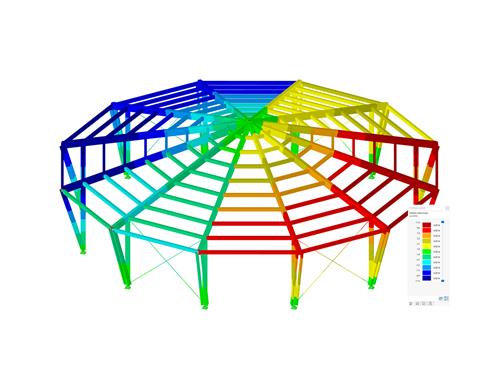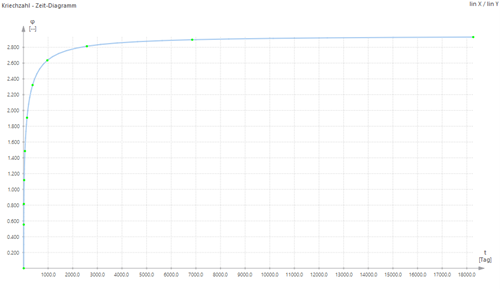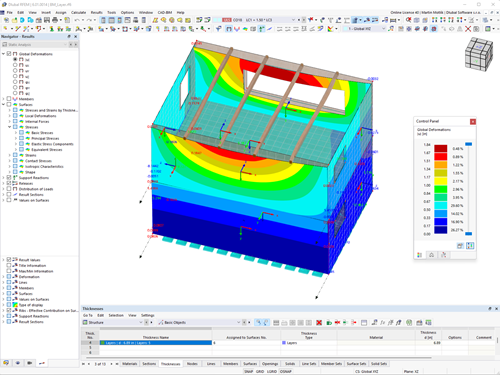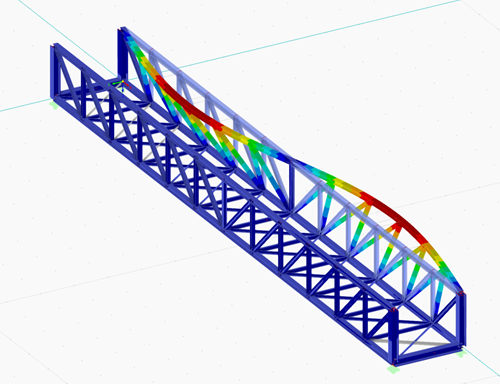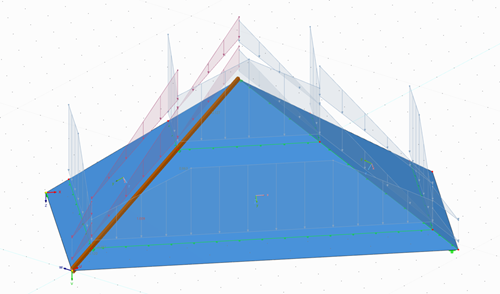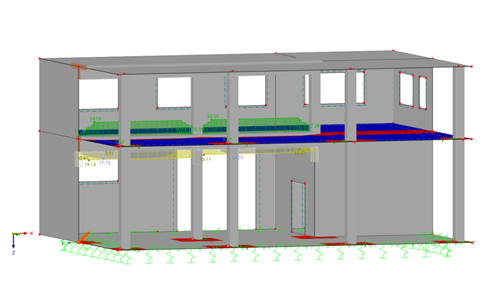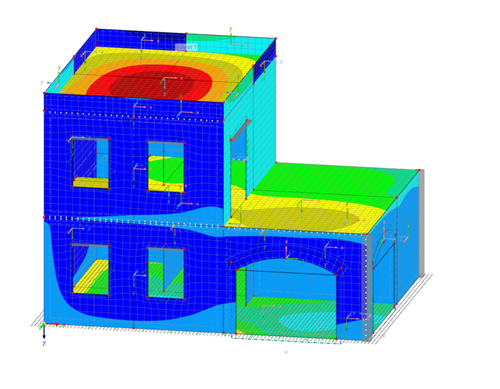The FEA software RFEM allows for the modeling and structural analysis of general plate, shell, and member structures. It is also possible to analyze combined structures as well as solid elements and objects with contact properties.
This user manual describes the modeling, calculation, and result evaluation features related to the structural analysis.
The frame & truss analysis software RSTAB allows for the modeling and calculation of general frame, beam, and truss structures. The powerful computation kernel enables linear or nonlinear determination of internal forces, deformations, and support reactions.
This user manual describes the modeling, calculation, and result evaluation features related to the structural analysis.
RFEM dialog boxes are shown for images of dialog boxes that are identical to RFEM.
The Masonry Design add-on activates special material models that have been developed for calculating masonry structures. This allows you to consider the masonry material in an FEM analysis.
In the calculation, internal forces and deformations are determined on the basis of stress-strain lines derived from the standardization. This means that the design is based on the standard.
This manual describes the Masonry Design add-on for the RFEM 6 program.
Dynamic analyses in RFEM 6 and RSTAB 9 can be performed in several add-ons.
- The Modal Analysis add-on is the basic add-on, performing natural vibration analyses for member, surface, and solid models. It is a prerequisite for all other dynamic add-ons.
- The Response Spectrum Analysis add-on allows you to perform a seismic analysis using the multi-modal response spectrum analysis.
- The Time History Analysis add-on allows for a dynamic structural analysis of external excitations that can be defined as a function of time.
- The Pushover Analysis add-on allows you to determine the maximum nonlinear response of a structure to seismic loads.
- The Harmonic Response Analysis add-on is still under development.
This manual describes the dynamic analysis add-ons for RFEM 6 and RSTAB 9.
For some structures, the long-term effects, such as creep, shrinkage, and aging, can influence the distribution of internal forces. This time-dependent material behavior can be determined using the Time-Dependent Analysis (TDA) add-on, which is available in the RFEM 6 program.
The influence of the time-dependent material behavior is currently only taken into account for member elements, and creep effects for the material concrete.
The Form-Finding add-on finds the optimal shape of members subjected to axial forces and tension-loaded surface models. The shape is determined by the equilibrium between the member axial force or the membrane stress and the existing boundary conditions.
The resulting new model shape with impressed force conditions is made available as a universally applicable initial state for further calculation of the entire structure.
The Geotechnical Analysis add-on allows for a finite element analysis of soil solids with the suitable material laws in RFEM 6. By integrating Geotechnical Analysis into the FEA software, the soil-structure interaction can be represented computationally completely in the overall model.
With the Geotechnical Analysis, it is possible to determine the stresses and deformations of a soil solid. The input and result evaluation are integrated in the user interface of the RFEM 6 program.
This manual describes the Geotechnical Analysis add-on for the RFEM 6 program.
The Multilayer Surfaces Add-on allows you to define the layer structure of any material models. In the case of orthotropic materials, the individual layers can be rotated by an angle β, and thus it is possible to consider different stiffnesses by direction. The Multilayer Surfaces add-on is completely integrated in the user interface of the FEA program RFEM.
This manual describes the Multilayer Surfaces add-on for the RFEM 6 program.
This manual describes the modeling of a stadium roof made of membranes in RFEM 6. Since the model consists of several segments, the creation of the individual segments is shown. Each segment consists of a main structure (a column, a stiffening element, cables) and a secondary structure (a membrane).
This manual describes the topics of the webinar "Steel Structure Analysis in RFEM 6 and RSTAB 9". First, it shows how to model a truss bridge. Using this example, it describes how to apply loads and load combinations, and then a stability analysis as well as design according to Eurocode 3 using the Steel Design add-on is carried out.
In the manual for the Steel Design add-on, you can find detailed explanations of all the add-on options.
The manual describes all steps in RSTAB 9. However, all explanations also apply to RFEM 6.
This manual describes the topics of the webinar Modeling and Design of Timber Structures in RFEM 6.
First, it shows how to model a hip rafter in RFEM 6 and how to apply loads, as well as how to perform timber design according to Eurocode 5. The creation of a printout report and the use of parameters and user-defined scripts are then discussed.
In the manual for the Timber Design add-on, you can find detailed explanations of all the add-on options.
This manual describes the topics of the webinar "Modeling and Design of Reinforced Concrete Structures in RFEM 6 and RSTAB 9".
Using an example of a building ceiling, we explain how to perform reinforced concrete design according to Eurocode 2. Furthermore, the result documentation in the printout report is explained.
In the manual for the Concrete Design add-on, you can find detailed explanations of all the add-on options.
This manual describes the topics of the webinar "Masonry Design of Using Finite Element Method in RFEM 6".
This webinar shows you how to model masonry structures in RFEM 6 and how to calculate them using the nonlinear orthotropic material model.
The RFEM program allows for the input and analysis of general plate, shell, and member structures. The program also allows you to create combined structures as well as to model solid and contact elements.
Dlubal Software supports the building information modeling by means of BIM (Building Information Modeling) using the BIM interfaces with Autodesk Revit and Tekla Structures. These interfaces are integrated into RFEM and RSTAB by default.
.png?mw=500&hash=547bb5653aed1342c6edea888af19ebcfe12c5fb)
